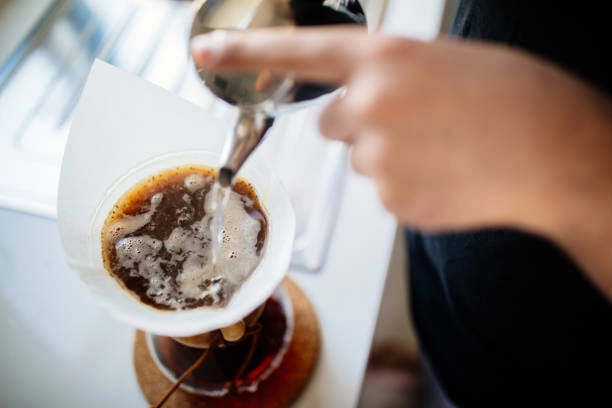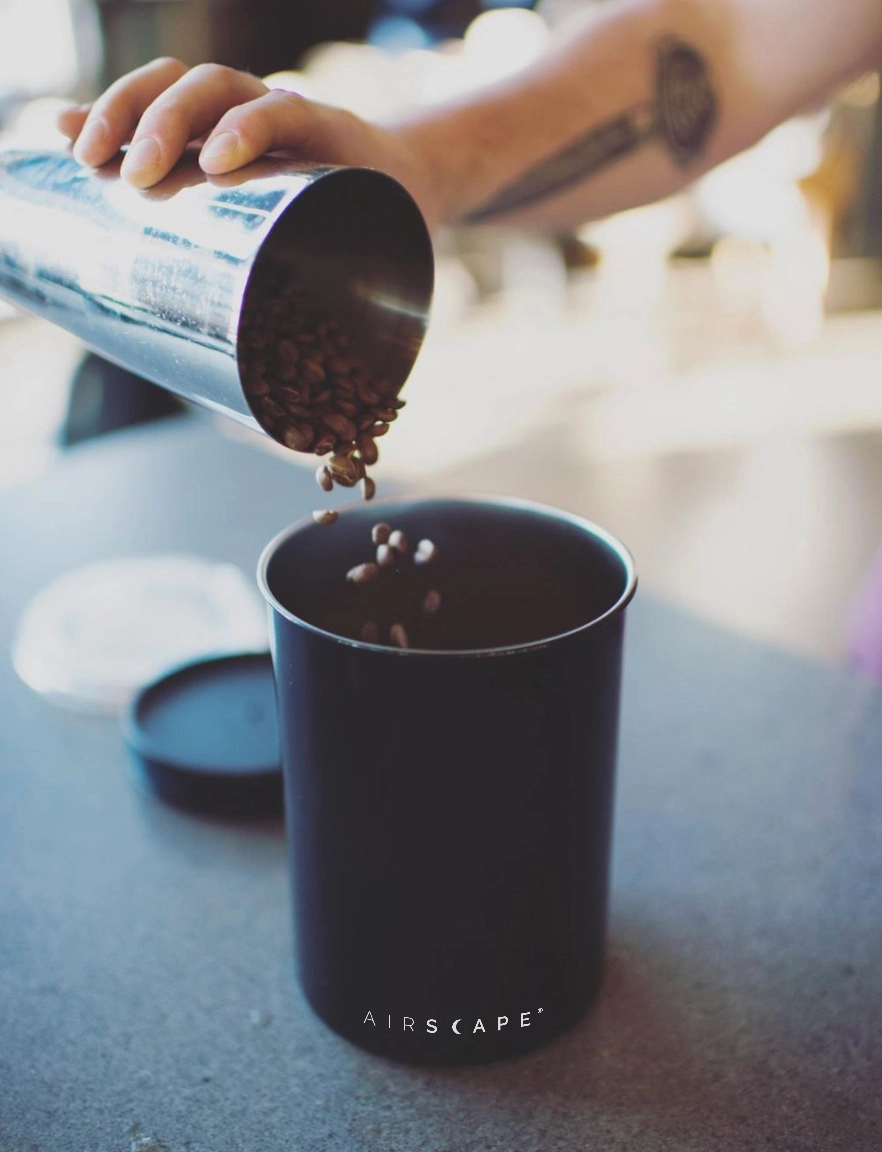What is Coffee Bloom?

Coffee is a staple in the daily lives of millions of people around the world. While coffee enthusiasts often focus on selecting the perfect roast, grind size, and brewing method, there is another important factor that can greatly affect the flavor and aroma of coffee: coffee bloom. In this comprehensive guide, we will delve into what coffee bloom is, how it occurs, and why it matters in the world of coffee brewing.
What is Coffee Bloom
Coffee bloom is the initial stage of coffee brewing when hot water is poured over freshly ground coffee. This stage is characterized by the release of carbon dioxide gas from the coffee grounds, causing the coffee bed to expand and bubble up. The blooming effect is most noticeable in pour-over brewing methods, such as the Hario V60, Chemex, and Kalita Wave, but also occurs in other methods such as French press and drip brewing.
Why Does Coffee Bloom?
Coffee beans are naturally high in carbon dioxide gas, which is produced during the roasting process. When coffee is ground, the surface area of the coffee particles increases, allowing for a faster release of CO2 gas when water is added. This release of gas creates the bloom effect, causing the coffee bed to rise and bubble up.
Why Does Coffee Bloom Matter?
Coffee bloom is an important factor in coffee brewing because it affects the final flavor and aroma of the coffee. During the bloom stage, the release of carbon dioxide gas also causes the coffee to degas or release other volatile compounds, such as organic acids and aromatic oils, that contribute to the flavor and aroma of the coffee.
If the bloom stage is skipped or not allowed to occur fully, the coffee will not degas properly, resulting in a lackluster and under-extracted brew. On the other hand, if the coffee is over-bloomed, it can lead to uneven extraction and bitterness in the final cup.

How to Achieve a
Good Coffee Bloom?
To achieve a good coffee bloom, there are a few important factors to consider:
1. Freshness of the Coffee
The fresher the coffee, the more carbon dioxide gas it will contain, and the more dramatic the bloom effect will be. It is recommended to use coffee that has been roasted within the last two to four weeks to achieve the best bloom.
2. Grind Size
The grind size of the coffee can greatly affect the bloom. A finer grind will allow for faster gas release, resulting in a more dramatic bloom. However, if the grind is too fine, it can lead to clogging and uneven extraction. Conversely, a coarser grind will result in a slower gas release, leading to a less pronounced bloom.
3. Water Temperature
The water temperature should be between 195-205°F (90-96°C) for optimal extraction and degassing. Water that is too hot can cause over-extraction and bitterness, while water that is too cold can result in under-extraction and a lack of flavor.
4. Pouring Technique
The pouring technique used in pour-over brewing can also affect the bloom. It is recommended to pour in a circular motion, starting from the center and moving outwards. This allows for even saturation and gas release throughout the coffee bed.
5. Blooming Time
The amount of time for the coffee to bloom can vary depending on the freshness of the coffee, the grind size, and the brewing method. Generally, a 30-second bloom time is recommended for pour-over brewing methods.
Does All Coffee Bloom?
Yes, all coffee blooms to some extent. However, the amount and quality of the bloom may vary depending on factors such as the
- freshness of the coffee (pick up an Airscape® Storage Container to ensure your beans stay fresher for longer)
- the roast level (darker the roast the less the coffee bloom effect)
- the brewing method used
Some coffee beans may have a more noticeable bloom than others, but in general, the bloom is a natural and expected part of the coffee brewing process.
The bloom process in French press and pour-over coffee brewing is quite different, and it can significantly affect the final taste of the coffee. In French press brewing, the bloom occurs when hot water is poured over the coffee grounds and immediately starts to release CO2 gas. The release of CO2 causes the coffee grounds to rise to the top, creating a thick layer of foam or “bloom” on the surface. This process is relatively fast and typically lasts for only a few seconds.
In contrast, pour-over brewing allows for a more extended bloom process. The combination of the water-to-coffee ratio, the size of the coffee grounds, and the brewing method creates an ideal environment for the coffee to bloom more thoroughly. The pour-over method allows the coffee to absorb the water more gradually, which allows for a slower release of CO2 gas. This slower release allows for a more prolonged and more thorough bloom process, leading to a more complex flavor profile.
One of the main reasons why the pour-over bloom is considered superior to the French press bloom is the control it offers the barista or home brewer. With the pour-over method, the barista can control the flow and temperature of the water, the size of the coffee grounds, and the timing of the bloom process. This control allows the barista to extract the ideal flavor and aroma from the coffee beans, resulting in a more refined and nuanced cup of coffee.
What if my Coffee doesn't Bloom?
If your coffee doesn’t bloom, it could be an indication of a few things. Firstly, it could be that your coffee is stale and has lost its CO2 content, which is necessary for the bloom to occur. In this case, it may be time to buy fresher coffee.
Secondly, it could be that the water used to brew the coffee is too hot, which can cause the CO2 to dissipate too quickly. In this case, try using slightly cooler water and see if that makes a difference.
Lastly, it could be that the coffee has already bloomed and the CO2 has dissipated before you began the brewing process. This could be due to the coffee being ground too early, or exposed to air for too long after grinding. To prevent this, grind your coffee just before brewing and store it in an airtight container.
Do you Stir the Coffee Bloom?
Yes, it is recommended to stir the coffee bloom after pouring the water. This helps to ensure that all the coffee grounds are evenly saturated and helps to release more of the carbon dioxide gas, resulting in a more uniform extraction. The stirring motion should be gentle and circular, allowing the water and coffee to mix thoroughly. However, it’s important not to over-stir or agitate the coffee too much, as this can lead to an uneven extraction and potentially a bitter taste.
The Importance of Coffee Freshness for Bloom and Flavor, and How to Optimize with Proper Storage

Coffee freshness is a crucial element in achieving a great coffee bloom. Coffee beans naturally release carbon dioxide gas as they age, and this CO2 plays a significant role in the bloom process. The fresher the beans, the more CO2 they contain, which creates a more robust bloom. The CO2 gas is trapped in the coffee grounds and is then released when hot water is added during brewing, creating a “bloom” effect.
To maintain coffee freshness, proper storage is essential. Air, moisture, heat, and light are the main enemies of coffee beans. Exposure to these elements can cause the beans to lose their freshness quickly. For this reason, it’s recommended to store coffee beans in an airtight container.
One popular option for coffee storage is the Airscape coffee container. This container has a patented valve that removes air and locks out moisture and light, keeping coffee beans fresher for longer. The container is also made of durable stainless steel, which helps to protect the beans from heat, UV, and other harmful elements.
Another crucial aspect of maintaining coffee freshness is using the beans within their peak freshness window. This window varies depending on the roast level, but as a general rule, it’s recommended to use the beans within two weeks of their roast date. After this time, the beans will begin to lose their freshness and their CO2 content will decrease, resulting in a weaker bloom and less flavorful coffee.
In addition to proper storage and usage timing, the grind size and water temperature used during brewing can also impact the coffee bloom. Finer grinds can lead to a more significant bloom, while coarser grinds may produce a weaker bloom. Using water that’s too hot or too cold can also affect the bloom, as the CO2 gas is more soluble in colder water.
Overall, understanding the relationship between coffee freshness and bloom is essential to achieving the best possible flavor in your coffee. By storing your coffee beans properly in an Airscape container and using them within their peak freshness window, you can maximize the bloom and enjoy a delicious, flavorful cup of coffee every time.
History of the Coffee Bloom
The history and evolution of coffee bloom in coffee culture is a fascinating topic that sheds light on the journey of coffee from a simple beverage to a complex art form. The discovery of coffee bloom dates back to the early 20th century when it was first observed in traditional coffee brewing methods in Ethiopia. As coffee culture spread to other parts of the world, so did the practice of blooming coffee.
In the early days of coffee brewing, the concept of coffee bloom was not yet understood. It was not until the 1930s that the first scientific study of coffee bloom was conducted by Dr. Satori Kato, a Japanese chemist. Dr. Kato discovered that the release of gas during coffee bloom was caused by the release of carbon dioxide from freshly roasted coffee beans. This gas release was a sign of freshness and a key factor in the flavor of the brewed coffee.
Over time, coffee bloom became an essential part of coffee brewing techniques, especially in pour-over and drip coffee methods. The specialty coffee industry has embraced the importance of coffee bloom in achieving the best possible flavor and aroma in coffee. Today, coffee bloom is not just a scientific phenomenon but a term that is widely used in the coffee world to describe the process of brewing coffee.
Want to Experience the Coffee Bloom Phenomenon Yourself?
Pick yourself up one of our Collapsible Pour Overs or one of our Camping French Presses to get your coffee bloom on!
Read our blog here on how to make the best Pour Over Coffee.
